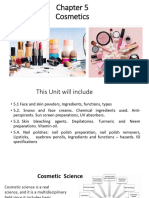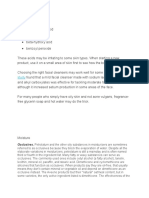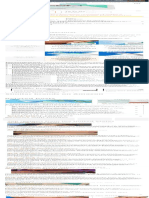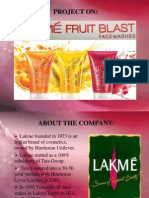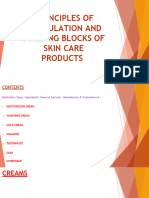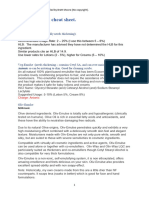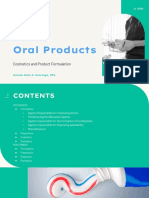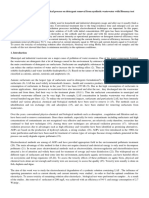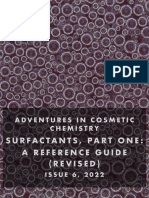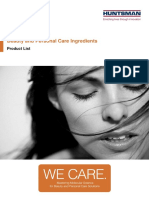Wejisijijezigixew
Wejisijijezigixew
Uploaded by
sureshpatel72737Copyright:
Available Formats
Wejisijijezigixew
Wejisijijezigixew
Uploaded by
sureshpatel72737Original Title
Copyright
Available Formats
Share this document
Did you find this document useful?
Is this content inappropriate?
Copyright:
Available Formats
Wejisijijezigixew
Wejisijijezigixew
Uploaded by
sureshpatel72737Copyright:
Available Formats
Micellar water formulation pdf
Micellar cleansing water formulation. Micellar water ingredients. Micellar water chemical formula. Biphasic micellar water formulation. Micellar water formulation pdf. Micellar water ingredient list. Micellar
water explained.
Skip to main content Deep into the world of micelles: What makes micellar water so popular and how to master their formulation? February 21, 2022 3 minutes of read time For 30 years, micellar waters have been gaining popularity day by day. When a (well-known) company launched a new product in 1991 called "micellar water", more suited to the
biology of the skin and responding to the concerns of sensitive skin, it was hard to imagine the success of this new galenic, yet very simple. What is a micellar water? Micellar waters have a very minimalist appearance. They just look like water. However, they are rich in active molecules and must, at the very least, contain MICELLES. Micelles are
invisible microspheres formed from amphiphilic molecules (surfactant) dispersed in a solution.
They are able to capture impurities while respecting the skin barrier, and thus eliminate make-up and exces of sebum in a single gesture.
In addition to micelles, micellar waters can also contain moisturizing, soothing and purifying active ingredients. Finally, an important point, micellar waters have to respect sensitive skin. This mixture of good cutaneous tolerance, ease of use and efficiency with a clean look is ultimately the success of micellar waters. Today, this success is driven by
the European market which represents 33% of the market share, followed by APAC with 30% and North America with 27%(1). In addition, a dynamic of new launches appeared particularly in younger markets, with high growth potential, such as Brazil or Indonesia (+9.1% and 21.6% CAGR(2, 3) respectively) . The popularity of this format also makes
it move from facial care to other categories such as hair care or body care. Shampoos, conditioners, hand gels, “micellar” baby cleansers are multiplying and developing this concept more globally To remember MUST-HAVE OF A MICELLAR WATER Tolerance & mildness: suitable for sensitive & irritated skin Refreshing, soft & non-sticky textures
Cleansing properties: impurities & make-up removal The classical composition of micellar waters corresponds to 0.1 to 5% cleansing and solubilizing surfactant(s) (anionic/amphoteric/non ionic, mild, able to solubilise oils), 0.1 to 5% emollients / humectants / superfatting agents, 0.1 to 5% active ingredients and preservatives. What are the key Seppic
ingredients most adapted to micellar water formulation? Surfactants are the key ingredients for micellar waters. The chosen surfactants should have good cleansing properties, low CMC (critical micellar concentration), a good skin tolerance profile and non-skin drying effects. Two surfactants of Seppic portfolio stand out: PROTEOL™ APL EF
(Sodium Cocoyl Apple Amino Acids) and PROTEOL™ OAT PF (Sodium Lauroyl Oat Amino Acids). The PROTEOL™ line is based on amino acids, grafted on lipophilic chains, and provides cleansing performance while maintaining skin integrity. Both grades are readily biodegradable. Furthermore, the alkyl polyglucosides of the ORAMIX™ line are
particularly interesting for their low CMC, thus forming micelles at a very low concentration. ORAMIX™ CG110 and ORAMIX™ NS10 are the most suitable. Skin hydration is one of the most popular claims among beauty products. Of course, this also applies to micellar waters. AQUAXYL™, our moisturizing best-seller, is a sugar-based complex
dedicated to skin moisturization and skin barrier reinforcement and perfectly adapted to this galenic. For skin purity, capryloyl glycine, a lipoaminoacid based on glycine, regulates oily & acne-prone skin while reducing the number of imperfections. FLUIDIPURE™ 8G, the liquid form of capryloyl glycine, is most adapted for the formulation of micellar
water (a pure powder form is also available here). For more information on other categories of products suitable for micellar waters, do not hesitate to contact us. Seppic micellar water formulas: This micellar lotion purifies the skin & helps maintain its balance.
Know more This minimalist milky micellar water takes care of the skin, by removing makeup & gently soothing. Know more A leave-on cleansing foam that remove daily accumulation of pollution residue. Know more References:(1) Based on Kingpin market research data(2) CAGR: current annual growth rate(3) Based on Mintel research data (micellar
water first launches between 2019 and 2021 For more information about our ingredients and formulations : Contact us How To Make Anti Aging AHA Lotion To Sell - Advanced Cosmetic Formulation Project 4A Alpha... How To Make All Natural AHA Exfoliating Toner - Advanced Organic Cosmetic Formulation Project 3A This... Below are the basic
prerequisites for our Advanced Practical Organic Cosmetic Formulation Program Ability to make... How Make Natural Anti Itch Rash Cream With Demonstration Video - Formulation Project 78 In this... Tamanu Oil Revitalizing Body Lotion Professional Formulation Guide - Cosmetic Formulation Project 77 How is everyone... Lotion Making & Oil In
Water Emulsion Demonstration Video To make any of the lotion or... 30 Heat Sensitive Carrier Oils To Use In The Cool Down Phase Of Your Formulation In... Why Some Cosmetic Formulation Projects Don't Have Demonstration Video We want to use this to set... 5 Non Comedogenic Oils & Butter To Make Skincare Products. They Won't Clog Pores Or
Cause... 7 Best Carrier Oils For Making Anti Aging Skincare Products If you are a professional formulator,... Body Butter Formulation Ideas For Advanced & Intermediate Formulators (Things To Do On Lazy Days) For... How To Convert Percent To Gram (Formulation Calculation For Cosmetic Chemists) Here is the second part... How To Convert
Grams To Percentage (Essential Calculation For Cosmetic Formulators) I just released a new... How To Make Skin Moisturizer With Ceramide [Advanced Cosmetic Formulation Project 1A] - Anti Aging Formulation... How To Make Anti Aging Lotion To Sell [ Advanced Cosmetic Formulation Project 2A For Mature... How To Make Gentle Natural Baby
Hair Wash Shampoo To Sell - Professional Formulation Project 76... Cream Formulation Guide: How To Make Baby Cream & Sensitive Skin Cream To Sell & Use... How To Make Organic Luxury Hair Cream With Shea Butter And Coconut Oil At Home -... How To Make Moisturizing & Stable Vitamin C Lotion Gel [Cosmetic Formulation Project 71] This
is... How To Make Chemical Free Natural Hair Dye At Home - Formulation Project 70 In this...
How To Make Hair Styling Mousse - Hair Styling Products Formulation Procedure (Project 67) Note: This... How To Make Professional Hydrating Facial Cleansing Oil & Natural Makeup Remover With Botanical Extracts [Project... This formulation guide is very easy to make. We are going to use mild surfactants blend... Fill the form below to be
notified when we release a new formulation project. Enter your... How To Make Professional Hair Repair Shampoo From Scratch [Make Your Own Hair Care Products] Formulation... Green Tea Aloe Vera Face And Body Lotion - Anti Aging Formulation Project 54 - All... To our esteemed members, we want to assure you that all our formulation projects
come with... How To Make The Best Lotion For Dry Itchy Skin - Cosmetic Formulation Project 7 Dear... If you want to start making skincare products to sell, you need to get yourself a... How To Make Moisturizing Lotion With Hydrosols & Botanical Extracts - Formulation Project 5 This formulation... Micellar waters can be found in the market for
quite some time now. They have become a major trend across the globe, and still have more potential to grow. But what are micellar waters exactly? Micellar water are facial cleansers, which are easily incorporated into our daily beauty routines, which only consist of very few ingredients – the biggest part being water, followed by the most important
one - a mild surfactant/solubilizer. Above a certain concentration of this amphiphilic substance in water, the critical micelle concentration, tiny, invisible micelles form spontaneously. These micelles, or better, the single molecules building a micelle, are needed to efficiently clean the face, as the hydrophobic part loves and absorbs dirt, oils, make-up
and sebum. But micellar waters are not only convenient facial cleansers, they are multifunctional and can do much more: #1 SAVING WATER Micellar waters are made with mild surfactants that keep the skin barrier intact when left on the skin. The biggest benefit therefore is that they don‘t need to be rinsed off. This helps save water, and we all
know how important this is for the planet. Removing the need to rinse after use makes micellar water a game-changing solution in every situation where facial cleansing might be necessary. A few examples include: traveling and having no opportunity to cleanse or refresh, coming home late and tired after a night out without wanting to go through a
lengthy cleansing routine, or being at a festival with no possibility to cleanse or shower properly. #2 MAKE-UP REMOVAL Going to bed with your make up still on can clog the pores in your skin and trigger acne. Therefore, it is very important to always remove your make-up before going to bed. Even though micellar waters are very mild to the skin,
they are still very effective in removing even the toughest to remove waterproof make-up. #3 SKIN CLEANSING Getting up in the morning, most people wash their faces to remove oils, dirt and sebum, that settled down overnight. Using harsh cleansers can impact the skin barrier, causing irritations and dry skin. With micellar water cleansers you do
not need to worry about your skin, but also do not need to compromise on the efficacy. #4 ADDITIONAL SKIN BENEFITS When active ingredients are incorporated into the micellar water, this can have additional skin benefits. One can think of moisturizing or energizing ingredients or small amounts of plant extracts or oils to soothe the skin and
further prevent skin irritations. At Evonik Personal Care we can offer multiple ingredients for micellar cleansing formulations. The following table shows you an overview of suitable, PEG-free and 100% plant-based surfactants/solubilizers for your application: An easy to make, gentle all-in-one cleanser, this DIY micellar water is perfect for sensitive
skin. Find out what is micellar water and if you should use it. What is Micellar water? Micellar water is a water based cleanser that is normally used to gently cleanse your face without the need to rinse it off afterwards. It pretty much looks like water, but it has gentle cleansing and moisturizing qualities. Micellar water can be used as an all-in-one
cleanser, and is especially great for those who are always on the go (Who has time to rinse?) or those with sensitive skin. While it is usually said to be good for all skin types, it may be a bit mild for those with overly oily skin or those who wear a lot of oil based or waterproof makeups. That said, I used it to remove my DIY Halloween costume makeup
off my son’s face between a school activity and a birthday party, and it worked perfectly. I’ve also found it to work well at removing long lasting type lipsticks. Micellar water is made up of micelles that are suspended in the aqueous (water based) ingredients of the cleanser. It all sounds quite fancy, which is why most micellar waters are pretty
pricey, but it is really quite simple and really doesn’t distinguish these cleansing waters from other types of cleansers (which also have micelles). What are Micelles? Micelles are basically little formations of surfactants that come together and are suspended in the water or aqueous ingredients of the cleanser. When using a low concentration of
surfactants, as you do in a non-rinse product like this one, the micelles stay in a sphere formation. Surfactants have a hydrophilic (water loving) head and hydrophobic (water “fearing”) tail.
So when you mix together the surfactants and water, the surfactants tails will start to hide from the water, coming together to form these little spheres of surfactants.
General idea of the structure of a micelle with the hydrophilic heads on the outside, and the hydrophobic tails in the center. The idea when using micellar water is that the oils and dirt of your skin will join together with the hydrophobic tails of the surfactants, and be wiped away with them.
What are surfactants? Surfactants lower the surface tension between liquids. They can act as detergents or emulsifiers, or have other qualities. Most detergents, shampoos, and shower gels are surfactant based. Up until now, I have focused this blog on soap based cleansers because I wanted to give people a simple, natural way to clean their homes
and bodies. In the natural communities, soaps are generally embraced by almost everybody, and it’s quite easy to make your own bar soap or even make your own liquid soap. On the other hand, I have heard many people say that they want to avoid surfactants because they are “chemicals” or they have heard bad things about some of the more
commonly used foaming anionic surfactants like SLS (sodium lauryl sulfate) or SLeS (sodium laureth sulfate). The problem with some of these harsher surfactants is that they can be irritating to your skin, especially when used at high percentages.
(I also make my own toothpaste to avoid SLS in toothpaste as it can cause canker sores, and my husband and I used to get them quite often.) It is impossible to avoid all “chemicals”, of course. Even soap uses NaOH (which is what scares many people away from making it) and, well, H2O, and sometimes NaCl. But, it is also pretty much impossible to
avoid all surfactants, unless you only use soap and body butters for everything. Even emulsifiers like BTMS (that I used in my homemade conditioner and roll on deodorant recipes) and really any of the more common “natural” emulsifying waxes are surfactants. (mostly cationic and non-ionic in nature). So, if you’ve ever used a lotion, a cream with
water in it, a “normal” shampoo (aka. not Castile soap), a conditioner, you’ve been using surfactants of some sort or other. I don’t want to get too far into talking about surfactants right now as that warrants a separate post, but I would like to say that surfactants are wonderful for many applications, and there are a lot of gentle, natural surfactants out
there than can be used and that are great for people with sensitive skin. Soap has a high pH, and that can be problematic for some people with sensitive skin as our skin pH is on the more acidic side. You can’t just lower the pH of liquid soaps because it will fall apart. On the other hand, surfactants can generally be lowered into a desired pH range. I
personally don’t notice issues when using soap on my skin, but my hair can’t handle the high pH of soaps, which is why I’ve never shared a recipe for a “shampoo bar” as of yet. I don’t like sharing things that I don’t use and love myself! Gentle non-ionic surfactants I decided to begin with micellar water as an easy recipe to introduce surfactants
because it is simple to make and uses a nice, gentle surfactant that should be great for all skin types. This micellar water is nourishing, and doesn’t need scrubbing or rinsing, making it great for people who are on-the-go and especially great for people with sensitive skin. (If you find it bothersome to leave traces of the product on your skin, though,
you can always resort to rinsing it off, and keep using it as a super gentle alternative to cleansers with a higher concentration of surfactants.) Non-ionic surfactants are generally quite mild cleansers and great for facial products like this one. This freshly made batch of micellar water used a bit of jojoba oil resulting in a cloudier liquid. It eventually
settled (see the picture above with the orchid), but still wasn’t as clear as the water made with my final recipe below. Nourishing additions to your DIY Micellar Water With rinse off products, you are more likely wasting your money on adding large amounts of extracts, hydrosols, and more expensive type ingredients. Micellar water, on the other hand,
isn’t normally used as a rinse off product (you could rinse it off if you wanted to, but it’s not how it’s generally used). For that reason, the ingredients you use will stay on your skin, making micellar water a great place for adding fun, nourishing ingredients. Understanding the ingredients I’m giving you a sample recipe that has worked well for me, but
you can switch things up to use different extracts and hydrosols to suit your purposes, or just to use up whatever you have on hand. I know a lot of you like that I explain why I use certain ingredients, to help you better understand if and how you can tweak the ingredients in the recipe, so let me explain why I chose what I chose. Decyl Glucoside: This
is the surfactant, and the active cleansing ingredient of your DIY micellar water.
In my first batch, I used Coco Glucoside, a non-ionic surfactant that is considered safe and has a score of 1 on the EWG Skin Deep Database. It is a mild, foamy surfactant derived from coconuts and glucose. Decyl Glucoside appears to be the most easy to find on Amazon, and seeing as it was more readily available to more of you, I decided to make
my next batch with it. It is also a glucose and coconut derived surfactant, and it also has a safe rating of 1 on the EWG scale. While Lauryl Glucoside is another very similar mild, non-ionic surfactant that you could just as easily use, but it also tends to be thicker and more opaque than the other two. It is an option, but I prefer the other two.Rose water:
I added rose water because it’s fairly easy to find, inexpensive, and has a lovely scent and possibly anti-inflammatory properties. It works well on sensitive skin, and may help with redness, acne, eczema, etc.Aloe liquid: Aloe is also anti-inflammatory and healing. It may help stimulate the growth of new cells. It’s also has been known to help people
successfully deal with acne, sunburns, and other skin conditions.Glycerin: Glycerin is a humectant, meaning that it helps draw moisture from your environment, bringing it into your skin to help hydrate it. You’ll want to keep the amount of glycerin at up to 5% of your recipe. Using more than that and it can leave your skin feeling sticky afterwards. If
you are using glycerin based extracts in your micellar water, you’ll want to reduce the glycerin amount, or leave it out all together to prevent that. (If you find that even at 5%, the water is too sticky for you, you can reduce the amount to suit your taste/your skin.)Cucumber extract: Cucumber extract is very soothing and hydrating, and also has
astringent properties that can help reduce puffy eyes. Cucumber extracts are usually glycerine based, so you could either switch it out for another glycerin based extract, or use just plain glycerin if you don’t want to use any extracts.Cosgard/Geogard: This is one of the few broad spectrum preservatives that is accepted for ECOCERT certified
cosmetics. I like it because you only need to use at around 1% of the final concentration to preserve your product.Distilled water: While I guess you could boil your water first and use that, I prefer to use distilled water to protect against any unwanted microbes as well as other unknowns that can be found in tap water.Lactic acid: I didn’t need to add
lactic acid to my micellar water, but if you were to use different ingredients, a different water, or something that may alter the pH in some way, you could add a few drops of lactic acid to bring down the pH as needed. (An ideal pH would be between 5 and 6). You can use inexpensive test strips to get an idea of the pH. Optional additions to play with
(with cons)… Jojoba oil: Jojoba oil is an oil soluble humectant. It helps moisturize your skin. I tried adding a few drops to the cleansing water in my first batch, and I think it helped slightly when it comes to removing oil based and other hard to remove makeups. Adding too much oil will cause a layer to form on top of the water. When I only used a few
drops, it stayed pretty well suspended in the mixture, but left the water looking slightly cloudy. (Actually the pictures are from my first batch with some jojoba oil in it. The recipe below makes a very clear liquid that pretty much just looks like water.) If you wanted to add more jojoba oil, you’d have to either add some sort of solubilizer to your
cleanser, or you’d have to shake it to mix it before using each time.Essential oils: You can potentially add essential oils for fragrance, but again, adding too much will mean that they will float on top. The surfactant we are using isn’t really a solubilizing one, so you’d have to mix the essential oils with a solubilizer before adding them into your water, if
having a stable, unseparated liquid is important to you. I prefer to get a nice fragrance from the floral waters or hydrosols used. How to make Micellar Water How to use micellar water Moisten a cotton pad or cotton cloth with the micellar water and gently wipe it across your skin. Repeat with a clear area of the cotton cloth or a new cotton pad until
you see no remains of dirt or makeup coming off onto the cotton.
While it isn’t necessary to rinse your skin after using the micellar water, if it feels tight on your skin, or you don’t like the feeling it leaves, you can rinse it off after using. 0 ratings0% found this document useful (0 votes)926 views1 page
You might also like
- A Complete Skincare Guide: Skincare Ingredients, Skin Brightening, Acne Cure & TreatmentFrom EverandA Complete Skincare Guide: Skincare Ingredients, Skin Brightening, Acne Cure & TreatmentNo ratings yet
- Chemical-Assisted Pipeline Pigging Cleaning OperationsDocument7 pagesChemical-Assisted Pipeline Pigging Cleaning Operationsargentino_ar01No ratings yet
- Dictionary-&-Cosmetic Ingredients Reference GuideDocument98 pagesDictionary-&-Cosmetic Ingredients Reference GuideSrinivasan Reddy100% (2)
- Additives in Water-Borne CoatingsDocument90 pagesAdditives in Water-Borne CoatingsWa Lao Eh100% (1)
- Free FormulationsDocument79 pagesFree FormulationsShruti JainNo ratings yet
- Formulate a SerumDocument9 pagesFormulate a Serumfelicia.m.limNo ratings yet
- Skin Care ProductsDocument26 pagesSkin Care ProductsRhea Jugnalia100% (1)
- The Best Moisturizers To Wear Under Makeup Skincare ComDocument1 pageThe Best Moisturizers To Wear Under Makeup Skincare ComHarboBech5No ratings yet
- AdnanDocument16 pagesAdnanM SNo ratings yet
- Consumer Products Ils TemplateDocument6 pagesConsumer Products Ils TemplatepangantihonjohnearlNo ratings yet
- L'oreal (Makeup Remover)Document2 pagesL'oreal (Makeup Remover)Thụy Kha VũNo ratings yet
- Chapter 5Document57 pagesChapter 5Adugnaw Biks100% (2)
- Biomiracle Beauty ProductsDocument5 pagesBiomiracle Beauty ProductsBiomiracle IndiaNo ratings yet
- Misc Skincare InfoDocument7 pagesMisc Skincare Infodgollin415No ratings yet
- Beauty & Skincare DocketDocument125 pagesBeauty & Skincare DocketShrutiNo ratings yet
- 2015 Study: Oil RemovalDocument5 pages2015 Study: Oil RemovalfawaazNo ratings yet
- Pharmaceutical Creams: Anupriya Singh B.PHARM (Ay) - 4 Year Banarasa Hindu UniversityDocument31 pagesPharmaceutical Creams: Anupriya Singh B.PHARM (Ay) - 4 Year Banarasa Hindu Universityanupriya singh100% (2)
- Cosmetic Preparations Cosmetic PreparationsDocument24 pagesCosmetic Preparations Cosmetic PreparationsKevin Garala0% (1)
- 1500+ Fungal Acne Safe Products An Updated List of Skincare For MalasseziaDocument1 page1500+ Fungal Acne Safe Products An Updated List of Skincare For MalasseziaАнастасия МартыненкоNo ratings yet
- Review On SidDocument10 pagesReview On SidSiddhant HagavaneNo ratings yet
- Double CleansingDocument5 pagesDouble CleansingAnne PorterNo ratings yet
- CeraVe Foaming Facial Cleanser, Makeup Remover and Daily Face Wash For Oily Skin, Paraben & Fragrance Free, 16 FL OzDocument1 pageCeraVe Foaming Facial Cleanser, Makeup Remover and Daily Face Wash For Oily Skin, Paraben & Fragrance Free, 16 FL OzAndrina Jn CharlesNo ratings yet
- Herbal Fairness Cream by ZuliDocument20 pagesHerbal Fairness Cream by ZuliZuli ShingalaNo ratings yet
- Skin Care LessonsDocument6 pagesSkin Care LessonsAna Luyza Oliveira100% (1)
- Formulation and Evaluation of Salicylic Acid Face SerumDocument10 pagesFormulation and Evaluation of Salicylic Acid Face Serumshmf9wvzg2No ratings yet
- Kozmeti̇k Kremleri̇ Full YapimDocument63 pagesKozmeti̇k Kremleri̇ Full YapimFeride Elif Ertürk100% (1)
- ColgateDocument2 pagesColgateMidhat arifNo ratings yet
- Product and ServiceDocument6 pagesProduct and ServiceSANDEEP KAURNo ratings yet
- Neeti 2Document13 pagesNeeti 2Sushmita SarkarNo ratings yet
- Leansing and Care Needs For Skin Eye Lids Lips Nail ScalpDocument91 pagesLeansing and Care Needs For Skin Eye Lids Lips Nail ScalpDRx Sonali TareiNo ratings yet
- Declaration AcknowledgementDocument13 pagesDeclaration AcknowledgementPlay Ind1eNo ratings yet
- Module 2 Unit 16 Skin ProductsDocument112 pagesModule 2 Unit 16 Skin Productswwworm2006100% (1)
- Face Mist Brightening - Unveiling The Science Behind A Skincare StapleDocument9 pagesFace Mist Brightening - Unveiling The Science Behind A Skincare Stapledr.ngyoonseongNo ratings yet
- Rough PDF 1Document30 pagesRough PDF 1MURUGANNo ratings yet
- A Complete Skincare Bible: Skincare Formulation, Skincare ingredients, Acne Cure & Skin BrighteningFrom EverandA Complete Skincare Bible: Skincare Formulation, Skincare ingredients, Acne Cure & Skin BrighteningNo ratings yet
- Emmy Dun ChemicalsDocument37 pagesEmmy Dun ChemicalsChudi Eze100% (2)
- Moisturizing Agents: Murooj Abudabaat MPH PCR Faculty of Pharmacy Hebron UniversityDocument23 pagesMoisturizing Agents: Murooj Abudabaat MPH PCR Faculty of Pharmacy Hebron UniversityMurooj Abu Dabaat0% (1)
- The Face Shop - Marketing Seminar Paper - Foreve Young Mustangs 2Document36 pagesThe Face Shop - Marketing Seminar Paper - Foreve Young Mustangs 2siyavushfrzNo ratings yet
- Cosmetics - Dentrifices FinalDocument105 pagesCosmetics - Dentrifices FinalsarojiniNo ratings yet
- Bar SoapDocument13 pagesBar SoapMikaella ManzanoNo ratings yet
- One Face, But One Hundred ProductsDocument14 pagesOne Face, But One Hundred ProductsFlorentina Custura67% (3)
- Creams: By: Mangadsil, Joseph Carl Matulac, Reynee Shaira Monroid, Kathleen Joy Nobleza, Ma. JanicelleDocument51 pagesCreams: By: Mangadsil, Joseph Carl Matulac, Reynee Shaira Monroid, Kathleen Joy Nobleza, Ma. JanicelleReynee Shaira Lamprea Matulac100% (1)
- Hand & Body: Lotion BarDocument12 pagesHand & Body: Lotion Barmjacobmariano100% (1)
- Final Report On Soap Industry of BangladeshDocument4 pagesFinal Report On Soap Industry of BangladeshSazib Mollick0% (4)
- A Basic Skincare Guide: Online Skincare, Acne Scars, Acne Treatment, Moisturizers and Skincare IngredientsFrom EverandA Basic Skincare Guide: Online Skincare, Acne Scars, Acne Treatment, Moisturizers and Skincare IngredientsNo ratings yet
- Paper 4807Document5 pagesPaper 4807sureshpatel72737No ratings yet
- Juliette Armand Circuit Breaker Mothers Day KitDocument26 pagesJuliette Armand Circuit Breaker Mothers Day KitSandra KohNo ratings yet
- Marketing Project - Group 11Document2 pagesMarketing Project - Group 11Sakshi KshirsagarNo ratings yet
- Building Blocks of Skin Care ProductsDocument35 pagesBuilding Blocks of Skin Care Productssyakina310No ratings yet
- DOSF4001-Body Cream Cleanser Course NotesDocument11 pagesDOSF4001-Body Cream Cleanser Course NotesSiglo Cero Riviera Maya Fer in TulumNo ratings yet
- Glowing Skin Begins at HomeDocument1 pageGlowing Skin Begins at HomeAmritaNo ratings yet
- Cream Making Cheat SheetDocument19 pagesCream Making Cheat Sheetross nagotNo ratings yet
- Descriere Produse enDocument4 pagesDescriere Produse enandreipalyiNo ratings yet
- Baby Care ProductsDocument2 pagesBaby Care ProductsBiswarup DasNo ratings yet
- Thesis Jojoba OilDocument6 pagesThesis Jojoba Oilafcngocah100% (2)
- Unique ConceptDocument5 pagesUnique ConceptRishabh AnandNo ratings yet
- IngredientsDocument15 pagesIngredientsJai MurugeshNo ratings yet
- Product ContentDocument25 pagesProduct ContentmoorthiyadhavaNo ratings yet
- Ydray Vademecum Medidermaby Sesderma Eng v2 Low 2Document21 pagesYdray Vademecum Medidermaby Sesderma Eng v2 Low 2Mohamed SabaNo ratings yet
- Section 1: King Abdulaziz University Pharmacy School Department of PharmaceuticsDocument20 pagesSection 1: King Abdulaziz University Pharmacy School Department of PharmaceuticsSurendra TomarNo ratings yet
- Description Beauty ProductsDocument5 pagesDescription Beauty Productsamit khannaNo ratings yet
- LAKMEDocument14 pagesLAKMECuteAngel06No ratings yet
- Chapter 4 - SemisolidDocument20 pagesChapter 4 - SemisolidHely PatelNo ratings yet
- Dimethylaminopropylamine (Dmapa) : Technical BulletinDocument4 pagesDimethylaminopropylamine (Dmapa) : Technical BulletinGiuliano Castellani CiodaroNo ratings yet
- Microbial Enhanced Oil RecoveryDocument35 pagesMicrobial Enhanced Oil RecoverySadanand Patil100% (1)
- Crodasinic LS LeafletDocument2 pagesCrodasinic LS LeafleticraoNo ratings yet
- Analytical Methods - Synthetic Detergents PDFDocument60 pagesAnalytical Methods - Synthetic Detergents PDFTamilarasiNo ratings yet
- Surface Tension ImportanceDocument3 pagesSurface Tension ImportanceHASSAN ARSHADNo ratings yet
- Vitech Green SG BR2012 v2Document4 pagesVitech Green SG BR2012 v2Errol FernandesNo ratings yet
- Oral Products - ToothpasteDocument47 pagesOral Products - ToothpasteJOSHUA ALCONES100% (1)
- IIR) - Books-Cosmetics and Beauty Products (Ayurvedic - Herbal PDFDocument12 pagesIIR) - Books-Cosmetics and Beauty Products (Ayurvedic - Herbal PDFAnu Kutty67% (3)
- Mild We Care: Surfactants BecauseDocument4 pagesMild We Care: Surfactants BecauseTinasheNo ratings yet
- SlideDocument52 pagesSlided_94No ratings yet
- LutensolxpDocument11 pagesLutensolxppkh29No ratings yet
- Biosurfactant 7Document8 pagesBiosurfactant 7Aranrie MosesNo ratings yet
- Pallab GoshDocument519 pagesPallab GoshbhoomikavinaycheguNo ratings yet
- Investigation of Effect of Electrochemical Process On Detergent Removal From Synthetic Wastewater With Bioassay TestDocument5 pagesInvestigation of Effect of Electrochemical Process On Detergent Removal From Synthetic Wastewater With Bioassay TestvahidNo ratings yet
- Surfactant Beta ValuesDocument3 pagesSurfactant Beta Valuesvirendra2jNo ratings yet
- A Review On Their Emulsifying Properties UsingDocument10 pagesA Review On Their Emulsifying Properties UsingSergio HenriqueNo ratings yet
- Surfactants Part One A Reference Guide RevisedDocument138 pagesSurfactants Part One A Reference Guide Revisednhatle8792No ratings yet
- Industrial Water Treatment: Product Portfolio OverviewDocument2 pagesIndustrial Water Treatment: Product Portfolio OverviewIlham Aripandi50% (2)
- Fijan 2007Document10 pagesFijan 2007JORGE PALOMINONo ratings yet
- Makalah Bahasa Inggris Blok 8Document23 pagesMakalah Bahasa Inggris Blok 8Radhwa FauztinaNo ratings yet
- Beauty & Personal Care Ingredients ListDocument11 pagesBeauty & Personal Care Ingredients ListtmlNo ratings yet
- OTC 19787 Oil Recovery and Surfactant Adsorption During CO - Foam FloodingDocument14 pagesOTC 19787 Oil Recovery and Surfactant Adsorption During CO - Foam FloodingAseuNo ratings yet
- Surfactant Science Principles and PracticeDocument249 pagesSurfactant Science Principles and PracticePityu PíNo ratings yet
- Formulas Ingredients and Formulation of CosmeticsDocument5 pagesFormulas Ingredients and Formulation of Cosmeticsmertel_2640% (15)
- 164 LaundryDocument56 pages164 Laundrytopguitar67% (3)
- C 14 SuspensionsDocument12 pagesC 14 SuspensionsAli Uy100% (1)











